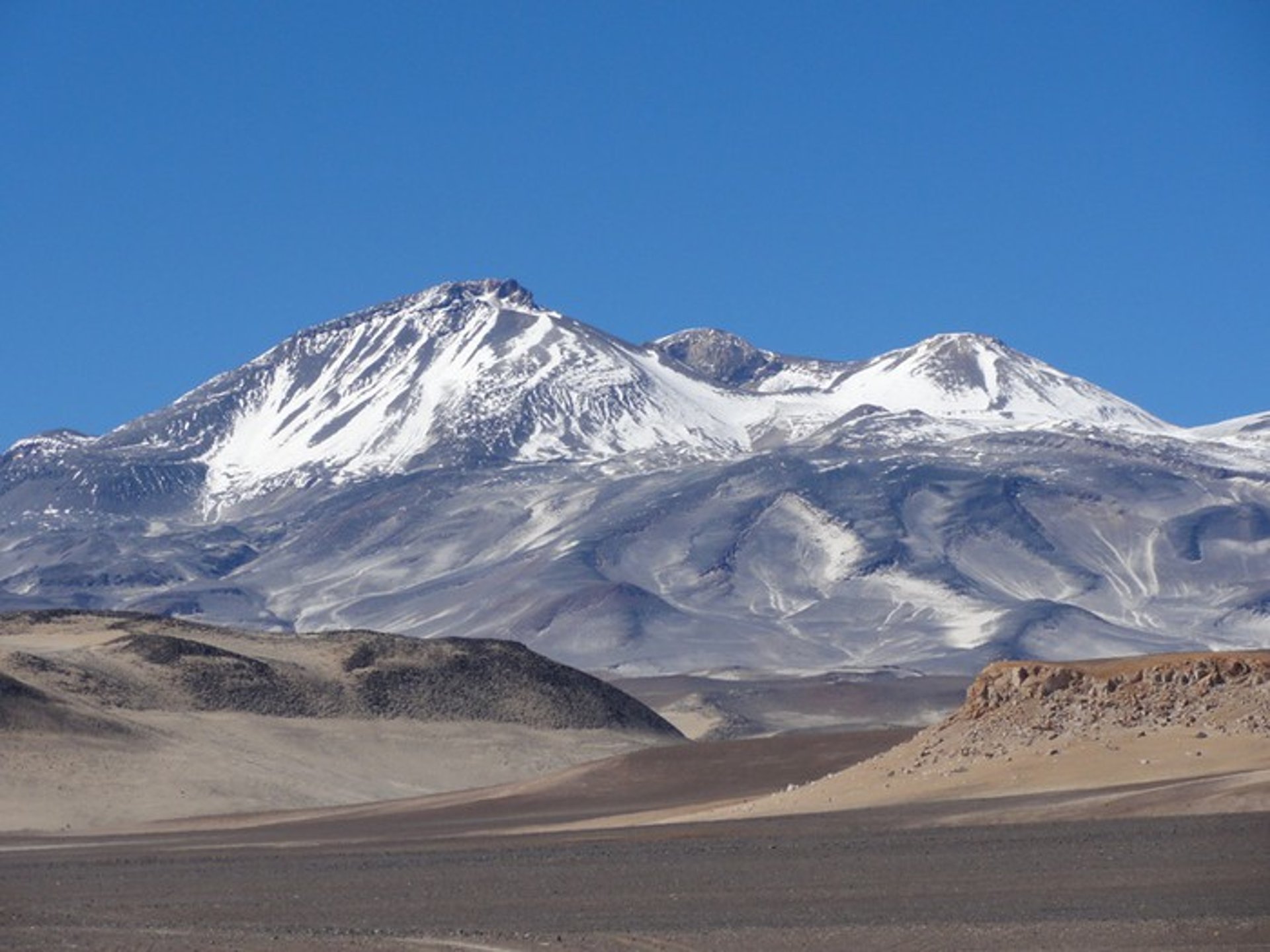
Volcán Ojos del Salado
Chilean Trail
Guided expedition for mountaineers seeking to challenge high altitudes with safety and expertise.
What’s it about?
The Chilean Route includes progressive ascents of volcanoes from 4,000 to 6,000 meters, with acclimatization days and preparations before the final summit push. The journey combines 4×4 transfers and stays in refuges or tents, providing easier logistics and relative comfort compared to the Argentine route. It requires high-altitude experience and good physical preparation. This option is ideal for those seeking safety, efficiency, and the chance to enjoy the highland landscapes with a bit more logistical support.


About the Volcano
Ojos del Salado, 6,893 m, the highest active volcano in the world and the second-highest peak in the Americas, rises on the border between Argentina and Chile, above the arid Atacama Desert.
Its summit and unique craters, including the highest-altitude lake in the world, make it a must for experienced mountaineers.
With accessible yet demanding routes, climbing it requires preparation, acclimatization, and a professional guide, offering the chance to experience a safe expedition in one of the most extreme landscapes of the Andes.
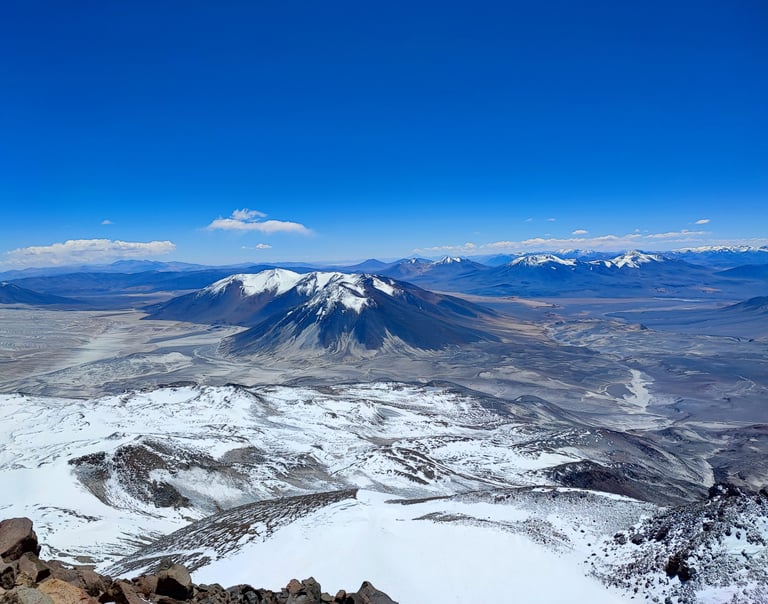

Required Equipment
Trekking or comfortable pants for hiking
Thermal leggings or synthetic base layer pants
Waterproof pants
Warm socks and thin inner socks (base layer)
Waterproof high-altitude mountaineering boots
Trekking shoes or boots
Crocs or sandals for rest
Long-sleeve base layer shirt
Fleece jacket or windstopper
Insulated jacket
Waterproof jacket with hood
Thin base-layer gloves and insulated waterproof gloves; mittens
Sun hat, warm hat, and multipurpose scarf/Buff
Wraparound sunglasses (Category 4) or goggles
Trekking poles
70L (or larger) durable backpack
Headlamp and spare batteries
Sleeping bag rated to -30°C (comfort -15°C) and neoprene sleeping pad
Three bottles or containers of at least 1 liter each (3 liters total)
Thermos 0.5–0.75 liters
Personal mate set
Sunscreen SPF 50 and lip balm
Personal hygiene kit: soap, toothbrush, small towel, toilet paper, wet wipes
Trash bags (minimum 10) to carry out waste
Crampons and ice axe
Eating kit: bowl, cup, spoon, knife, fork, napkin (preferably unbreakable plastic)
Optional personal lunches: cereals, protein bars, dried fruits, gels, candies, cold cuts, powdered drinks
Solar or battery chargers for phone and headlamp
Small personal first-aid kit
Personal medication if needed
Logistics and Summary Schedule
Day 1-2: Meet in Fiambalá, transfer to Hotel Cortaderas (3,300 m). Acclimatization and ascent of Cerro Pastos Amarillos (4,100 m).
Day 3: Ascent of Cerro Negro Muerto (5,036 m) and overnight in refuge or tents.
Day 4-5: Cross into Chile, customs procedures. Settle at Laguna Verde (4,000 m). Rest day and easy trekking.
Day 6: Ascent of San Francisco Volcano (6,040 m).
Day 7: Rest day at Laguna Verde.
Day 8: Ascent of Cerro Vicuñas (6,067 m).
Day 9-10: Transfer to Refugio Murray (4,550 m) and then to Refugio Atacama (5,300 m) for acclimatization.
Day 11: Ascent and setup of Tejos Camp (5,750 m).
Day 12: Summit attempt on Ojos del Salado (6,892 m). Return to Tejos or Atacama depending on conditions.
Day 13: Return to Fiambalá, end of services.
Days 14-15: Reserved as extra days for bad weather.
Required Equipment
Logistics & Summary Itinerary
What’s Included
Round-trip transfers from Fiambalá in 4×4 vehicles
Accommodation in hotel and/or high-altitude tents, depending on the program
Professional mountain guide with high-altitude experience
Full board during the expedition (breakfast, box lunch, afternoon snack, and dinner)
Shared equipment: tents, heaters, fuel, cooking pots
Safety: VHF radios, satellite phone, GPS, first-aid kit, and oxygen tank for emergencies
Services Not Included
Meals outside the mountain itinerary and in town
Personal clothing and equipment
Expenses due to expedition withdrawal
Rescue or evacuation costs
Tips
Accommodation before or after the expedition
Services Not Included
What’s included
Required Equipment
Trekking or comfortable pants for hiking
Thermal leggings or synthetic base layer pants
Waterproof pants
Warm socks and thin inner socks (base layer)
Waterproof high-altitude mountaineering boots
Trekking shoes or boots
Crocs or sandals for rest
Long-sleeve base layer shirt
Fleece jacket or windstopper
Insulated jacket
Waterproof jacket with hood
Thin base-layer gloves and insulated waterproof gloves; mittens
Sun hat, warm hat, and multipurpose scarf/Buff
Wraparound sunglasses (Category 4) or goggles
Trekking poles
70L (or larger) durable backpack
Headlamp and spare batteries
Sleeping bag rated to -30°C (comfort -15°C) and neoprene sleeping pad
Three bottles or containers of at least 1 liter each (3 liters total)
Thermos 0.5–0.75 liters
Personal mate set
Sunscreen SPF 50 and lip balm
Personal hygiene kit: soap, toothbrush, small towel, toilet paper, wet wipes
Trash bags (minimum 10) to carry out waste
Crampons and ice axe
Eating kit: bowl, cup, spoon, knife, fork, napkin (preferably unbreakable plastic)
Optional personal lunches: cereals, protein bars, dried fruits, gels, candies, cold cuts, powdered drinks
Solar or battery chargers for phone and headlamp
Small personal first-aid kit
Personal medication if needed
Gallery
Take a look at some images from our expeditions and see the experience for yourself.
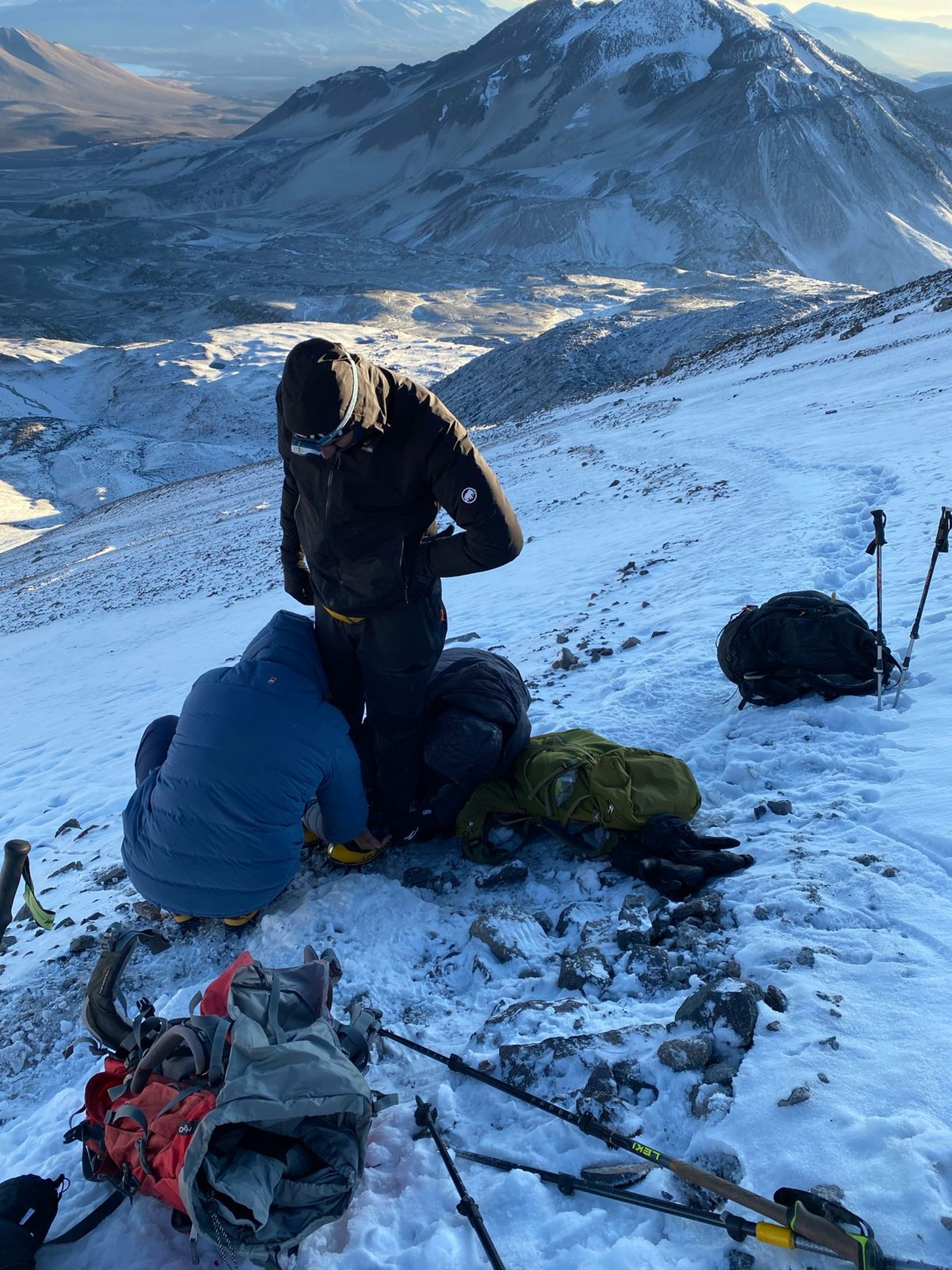
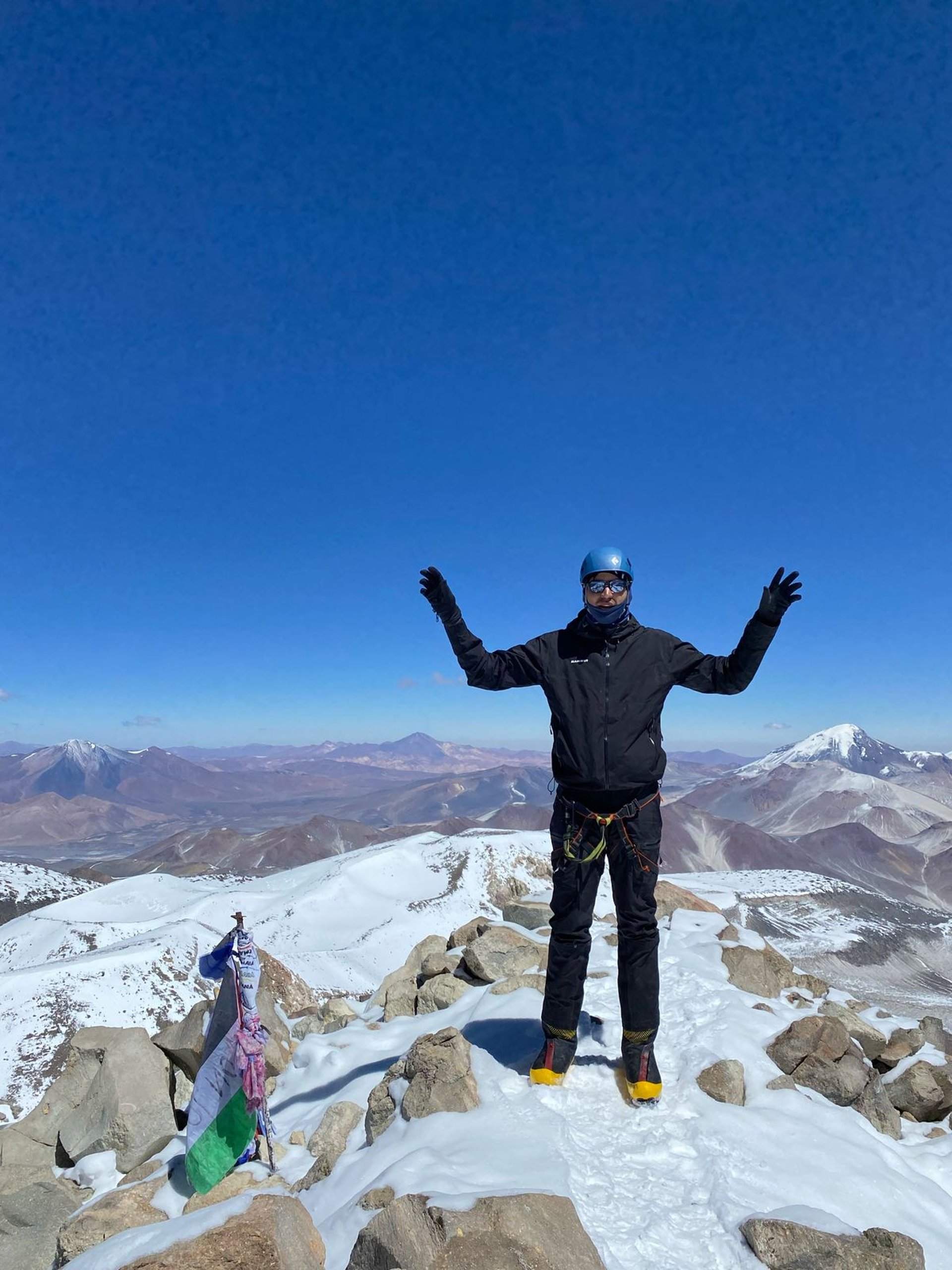
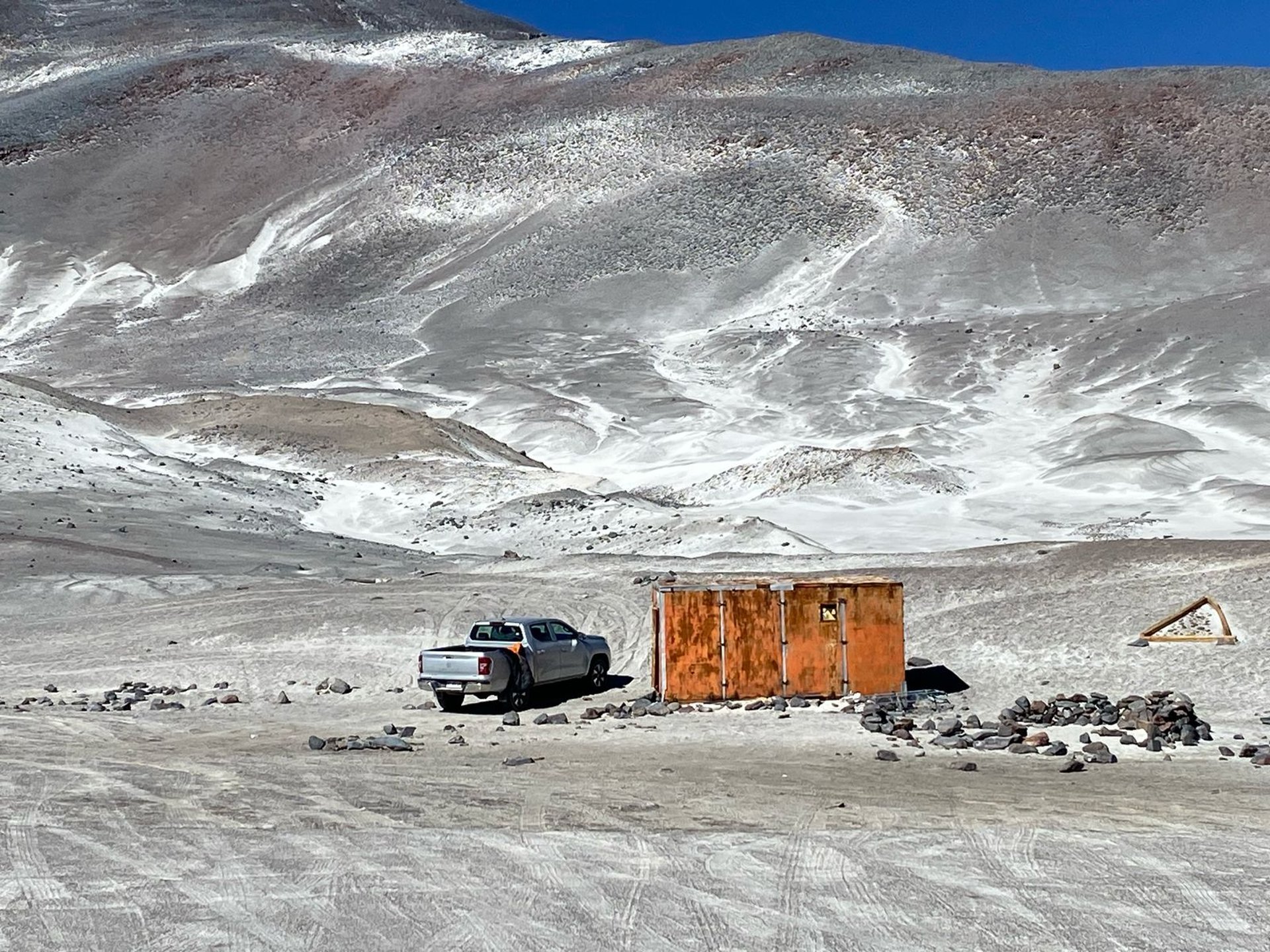
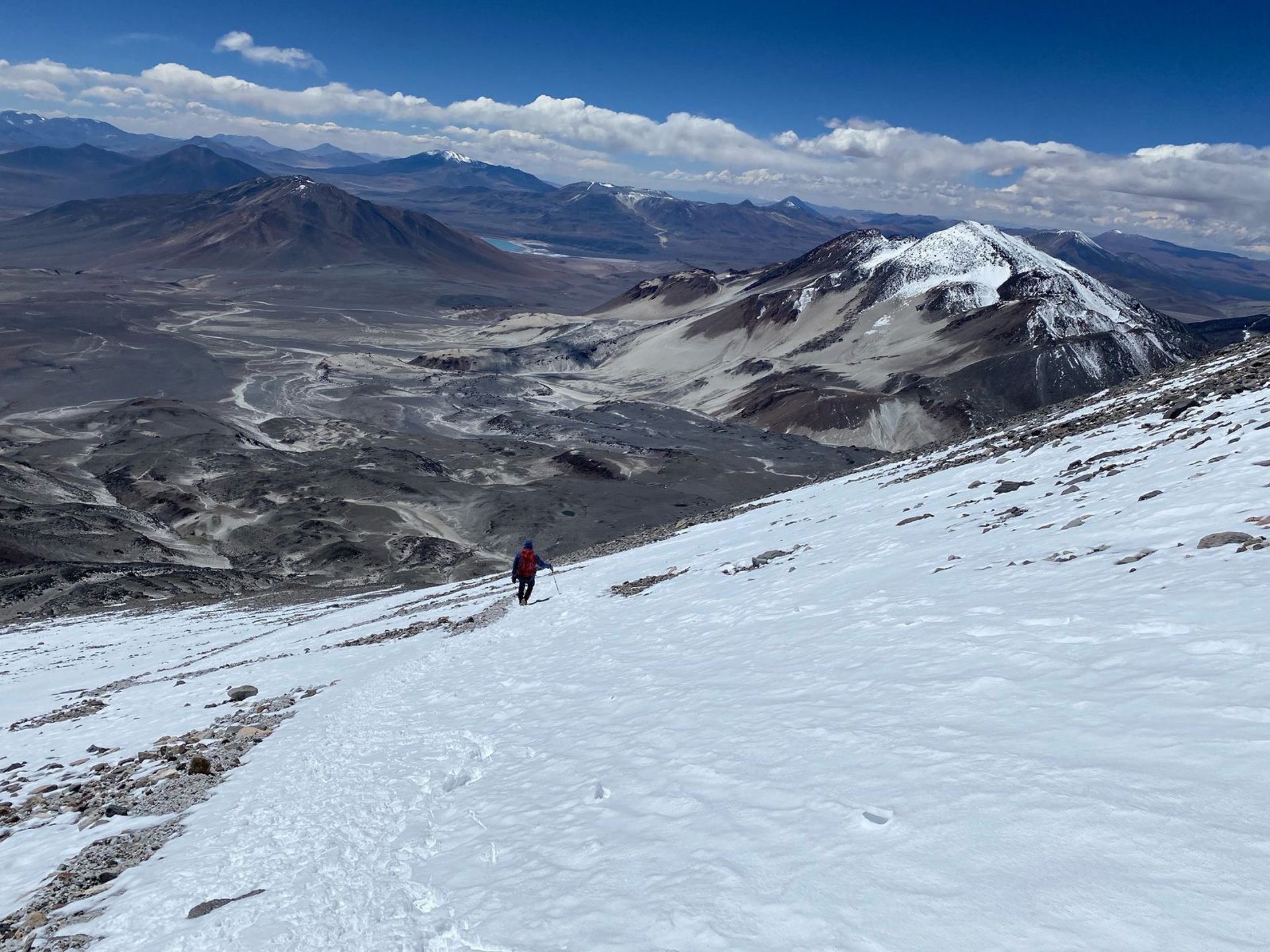
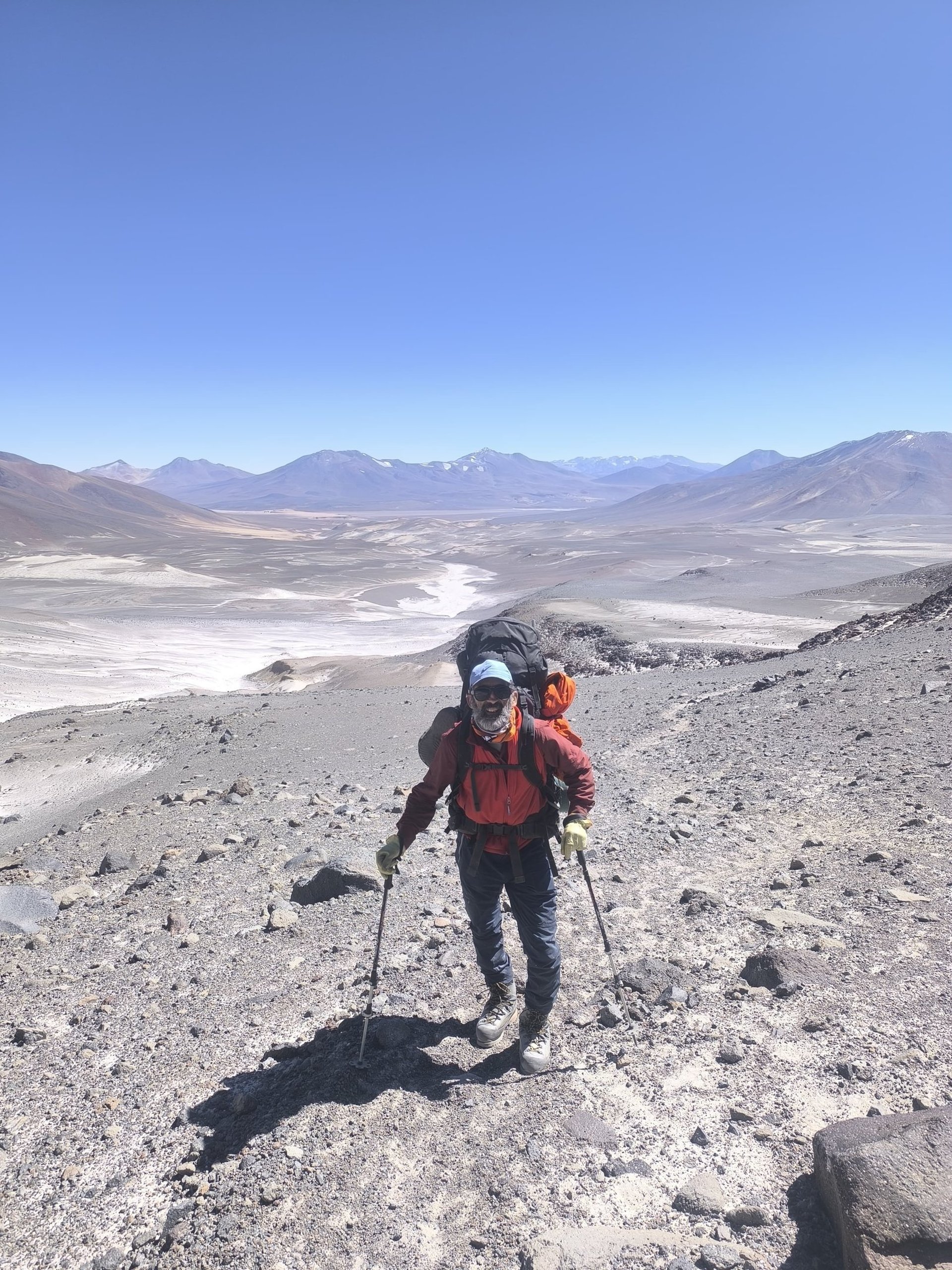
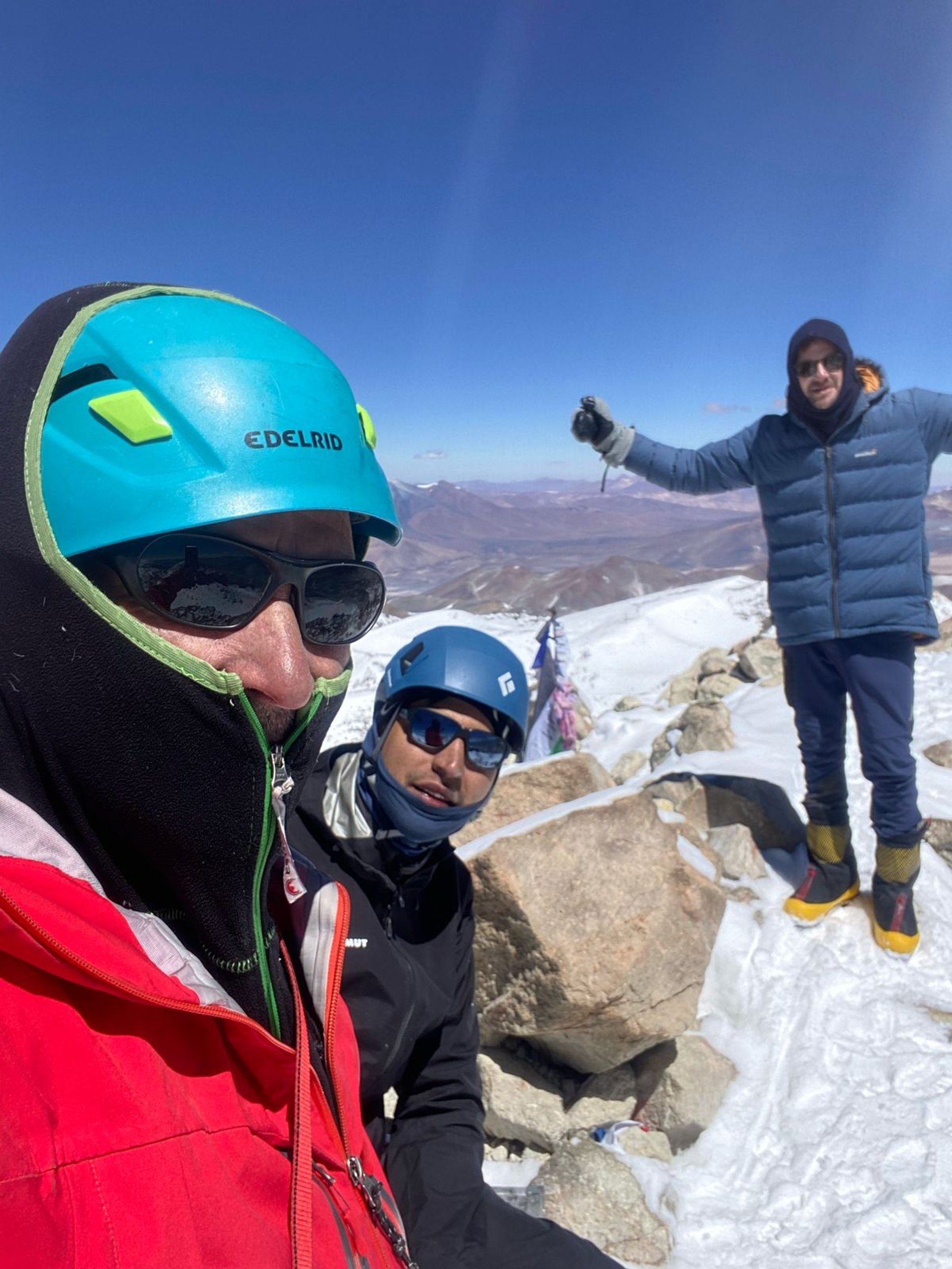
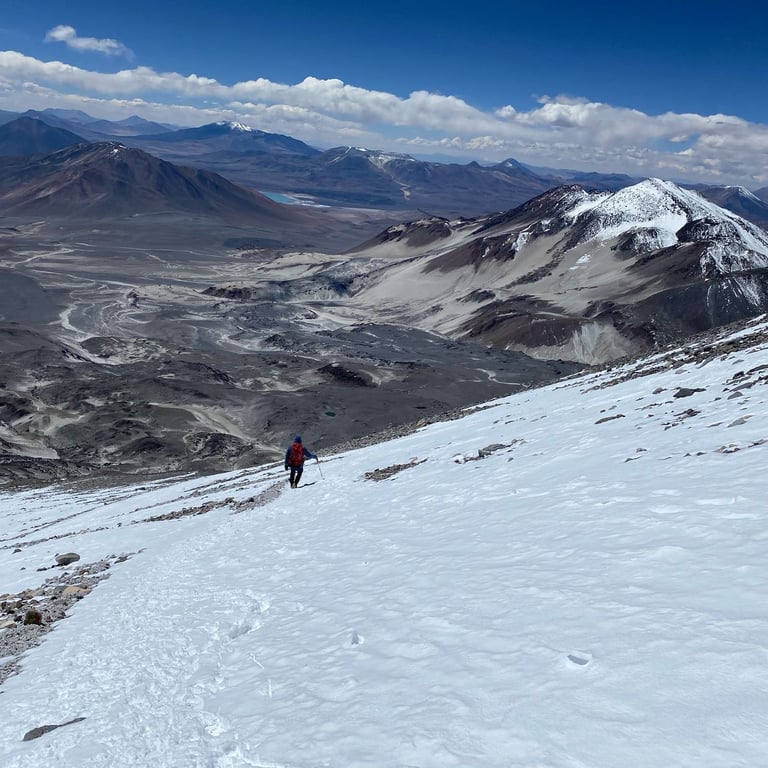
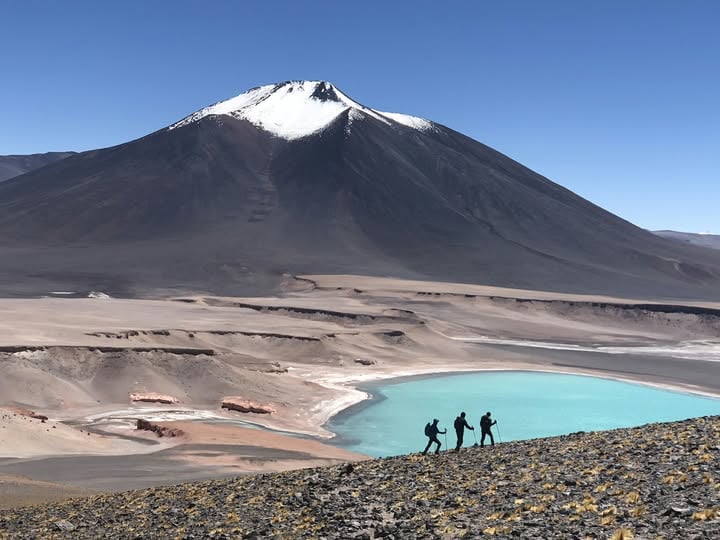
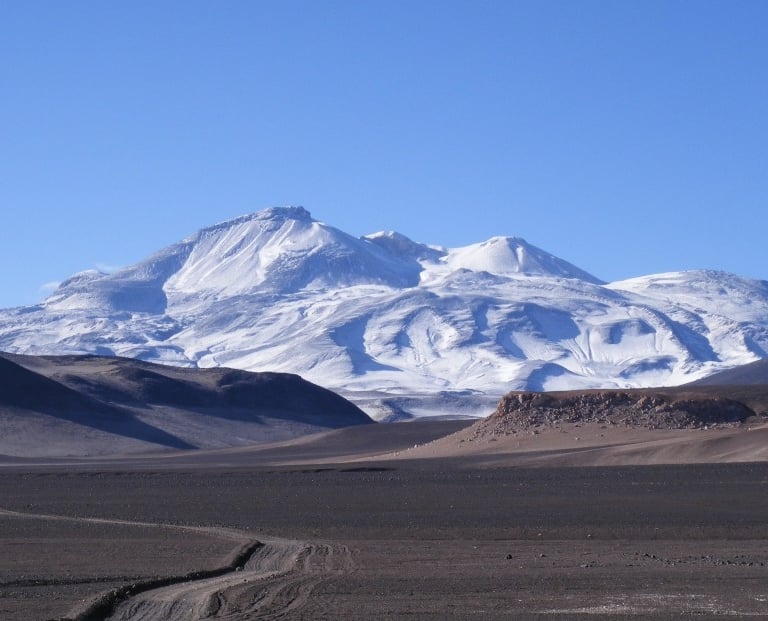
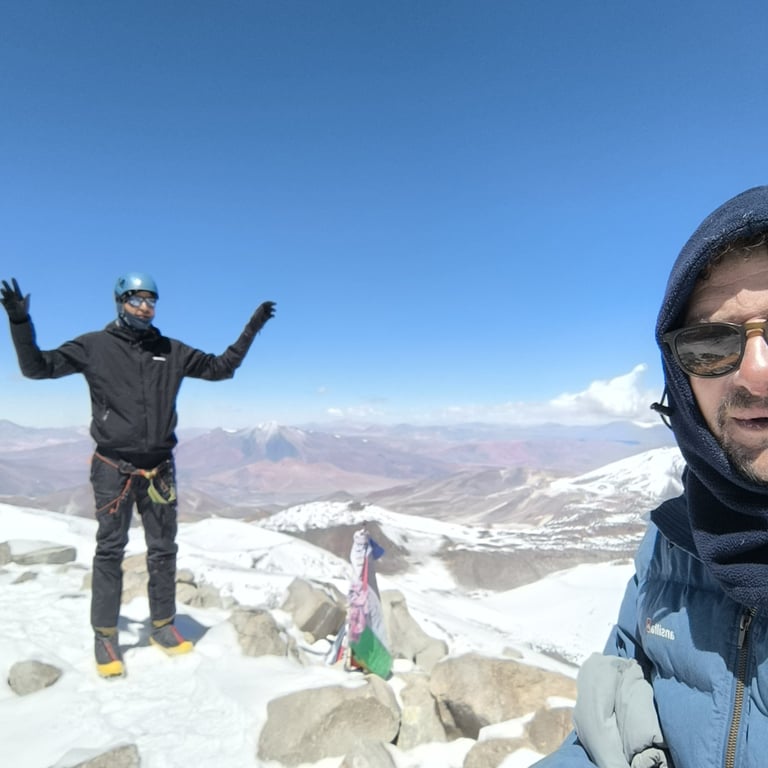
Contact Us
We help you plan your expedition. Contact us and get ready for your next mountain adventure.
Contact
Contact me for more information.
Follow me on instagram!
+54 9 11 6484-2536
Diseñado por Mappea Web
